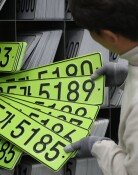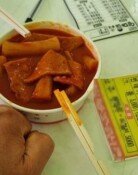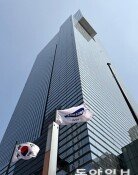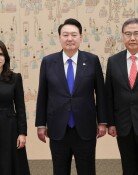Wave of Multiculturalism Spreading in Korea
Wave of Multiculturalism Spreading in Korea
Posted February. 02, 2009 09:54,
Store owner, do you have Thai rice?
Well, were all sold out. What about Korean rice? I will give you a discount.
Around 1 p.m. yesterday at Pyeongtaek Rice Store in Ansan, Gyeonggi Province, shop owner Song Hyeon-ho and a Filipina were wheeling and dealing. The woman thought for a while and ended up buying Chinese rice, which is relatively cheap.
A little later, a one-ton cargo truck stopped in front of the store. A dark-skinned man in his 30s got off the truck. Song welcomed him.
Hi, Rajah! How much will you buy?
Rajah is a regular customer at this store. He runs Bangladeshi restaurant in Shiheung, Gyeonggi Province.
Song opened the rice store with her husband in 1983, when the foreign population was virtually non-existent. Twenty-six years later, 90 percent of the customers are foreigners.
Song said, At one point, we realized we had a lot of foreign customers. I never imagined we would live with foreigners of various skin colors in our neighborhood.
Ansan has residents from 58 countries and is considered a representative multicultural city in Korea. Of the 331,252 residents in December last year, 27,713 or 8.4 percent were foreigners, earning the city the nickname Village of No Borders.
The situation in Ansan is representative of Koreas steady transformation into a multiracial society.
The country has 854,007 registered foreigners residing here for more than 90 days, or 17.2 per 1,000 people. In 1998, only 147,914 foreigners were registered as residents, or 3.1 per 1,000 people.
Expats account for 1.7 percent of the population. Including short-term visitors and illegal aliens, the number of foreigners is an estimated 1.15 million.
Demography has rapidly been changing with 2003 as a turning point, especially due to the growth of migrant workers and foreign spouses. The number of foreigners more than doubled from 210,249 in 2000 to 437,954 in 2003.
In 2019, foreigners are expected to comprise 3.6 percent of the population, or 35.8 per 1,000 people. The Justice Ministry said the number of foreigners will increase to 1.68 million in 2015 and 1.77 in 2020.
Chu Gyu-ho, head of the ministrys Korea Immigration Service, said, As the economy grows and human rights improve, Korean society is fast becoming multicultural.
Since the change is rapid, Korea urgently needs social preparation to ensure harmony and co-existence with foreigners.
The country, however, lacks preparation in this regard. Deep-rooted beliefs in blood ties and nationalism of a homogeneous nation often result in prejudice and discrimination against foreigners. Foreigners who suffer hardship in medical care, education and welfare are growingly antagonistic toward Korean society, and their anti-Korean sentiment is damaging the national image and competitiveness.
Yoon In-jin, a sociology professor at Korea University, said, If Korea fails to brace for multiracial families, mixed-blood children and foreigners, it will suffer a huge social cost in the future.
As multicultural families are set to increase in number amid the era of globalization, the country must proactively develop a system to make the most of them.
Headline News
- N. Korea launches cyberattacks on S. Korea's defense companies
- Major university hospital professors consider a day off each week
- Italy suffers from fiscal deficits from ‘Super Bonus’ scheme
- Inter Milan secures 20th Serie A title, surpassing AC Milan
- Ruling and opposition prioritize spending amid tax revenue shortfalls







